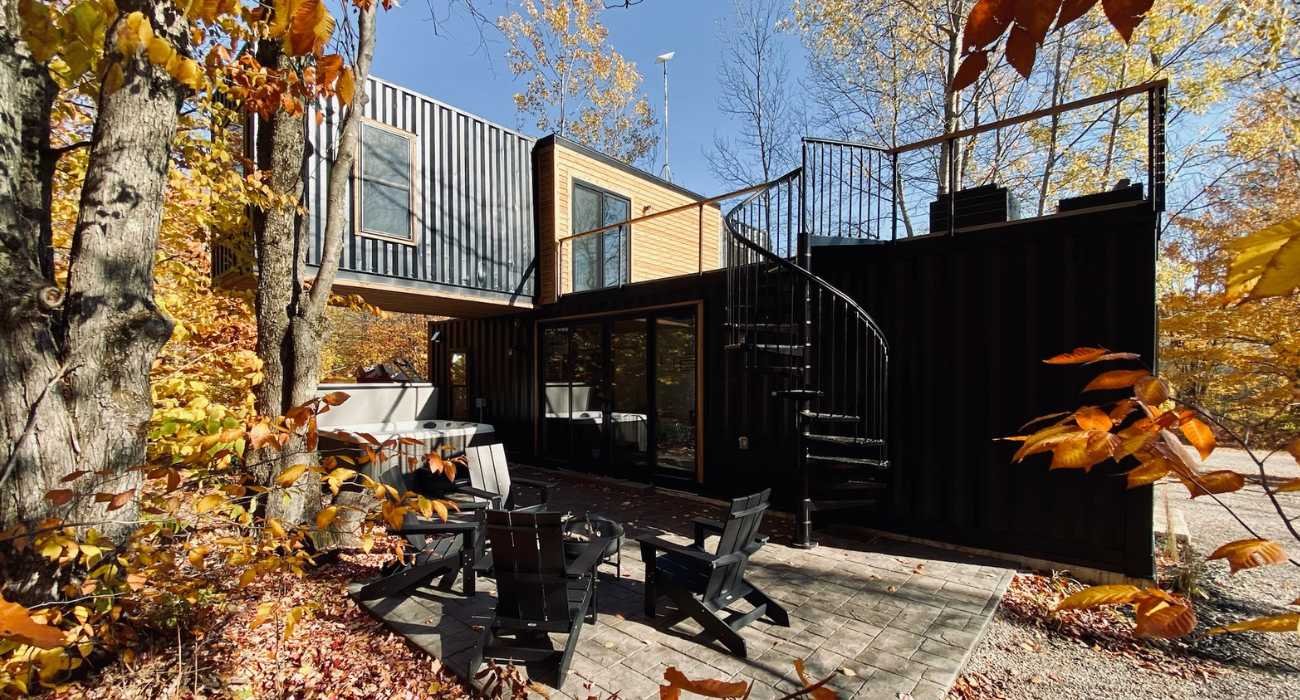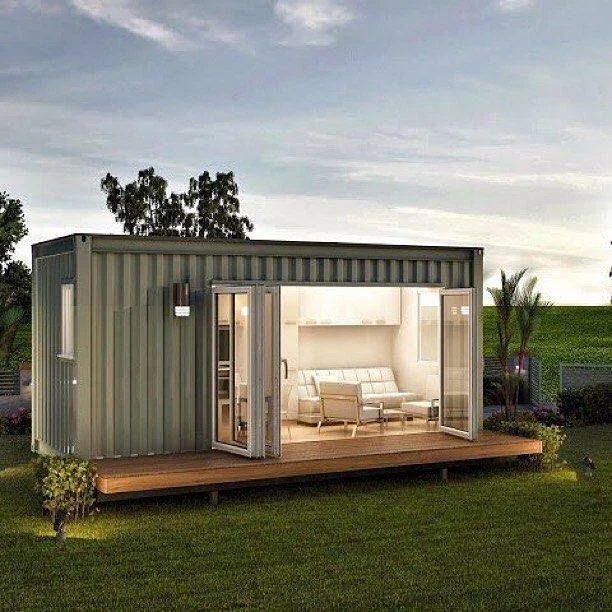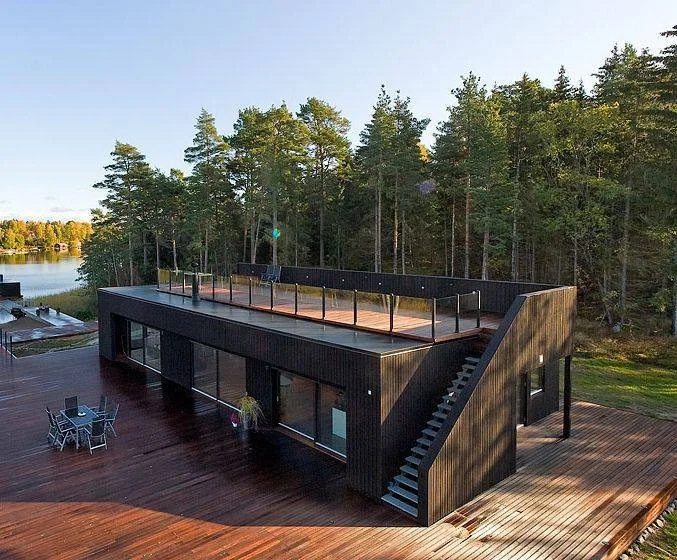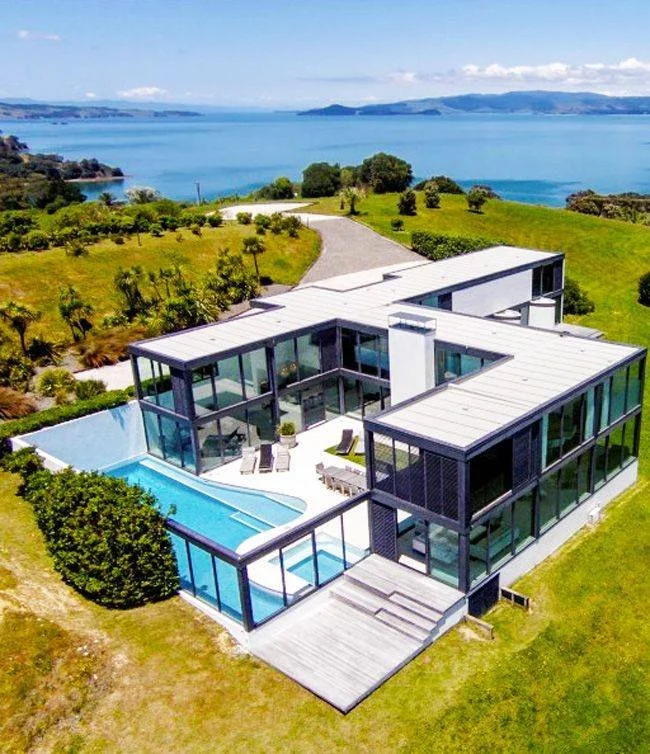The 5 Benefits Of Building A Shipping Container Home
Shipping container homes have become increasingly popular in recent years, with more and more people turning to these unique and innovative homes as a viable alternative to traditional stick-built houses. And it's not hard to see why - there are many benefits to owning a shipping container home that make it an attractive option for anyone looking for a unique and affordable living space. Here are five key benefits of building and owning a shipping container home:
1. Affordability
One of the most significant benefits of a shipping container home is its affordability. Shipping containers are designed to be transported all over the world, which means they are built to be incredibly durable and weather-resistant. As a result, they can often be purchased for a fraction of the cost of traditional building materials, making them an excellent choice for anyone on a tight budget. While Shipping container homes can be more affordable than traditional housing, it ultimately depends on a variety of factors such as location, design, and materials used.
Materials: One of the biggest advantages of shipping container houses is that they use recycled shipping containers as the primary building material. These containers can be purchased for a fraction of the cost of traditional building materials such as brick, wood, and concrete. However, the cost of modifying and retrofitting the container to be habitable can offset some of the savings from the container itself.
Labor: Another factor to consider is the cost of labor. Building a shipping container home typically requires less labor than building a traditional house, which can result in lower overall construction costs. Additionally, performing the work yourself can save money compared to using specialized container home builders.
Design: The design of the house can also impact its cost. A simple container home design with few modifications will cost less than a more complex design that involves cutting and welding multiple containers together.
Location: The cost of building a container home can vary depending on the location it's constructed. For instance, having a container placed on a trailer is much less expensive than purchasing a plot of land and pouring a foundation. Shipping container homes built in areas where there is a limited supply of shipping containers may also cost more due to the added transportation costs.
Site Preparation: Site preparation can also impact the overall cost. In some cases, additional site preparation may be required to ensure the land can support the weight of the containers.
2. Sustainability
Another significant benefit of a shipping container home is its sustainability. With the rise of the green movement, many people are looking for ways to reduce their impact on the environment, and containers can provide an excellent opportunity to do just that. However, their level of sustainability will depend on various factors, such as the sourcing of materials, energy efficiency, and overall impact on the environment. Here are some ways in which shipping container homes can be sustainable:
Repurposing: Shipping containers are typically made from steel and are designed to be durable and weather-resistant. By repurposing steel shipping containers for a new life as a home, you are giving a second life to materials that would otherwise be discarded. This can reduce the amount of waste in landfills and help conserve natural resources.
Energy Efficiency: Many shipping container homes are designed to be energy-efficient, with features such as insulation, energy-efficient windows, and passive solar heating. Additionally, since shipping containers are relatively small, they require less energy to heat and cool, which can further reduce energy consumption.
Sustainable Materials: Many of these modular homes are built using sustainable materials such as bamboo flooring, low-VOC paint, and other eco-friendly products. These materials can help reduce the home's impact on the environment.
Off-Grid Capabilities: Some shipping container homes are designed to be completely off-grid, with features such as solar panels, rainwater collection systems, and composting toilets. This can help reduce reliance on traditional utilities and reduce the home's carbon footprint.
Location: The location of the home can also impact its sustainability. By building a container home in an urban area, you can reduce the need for a car, since many amenities will be within walking or biking distance. Additionally, building a shipping container home on an infill lot can help reduce urban sprawl and preserve green spaces.
3. Durability
As mentioned earlier, storage containers are built to withstand harsh conditions, which means they are incredibly durable. This makes them an excellent option for areas that are prone to extreme weather conditions such as hurricanes, earthquakes, and tornadoes. Additionally, their steel construction means they are incredibly resistant to fire and pests. Here are some of the reasons why shipping containers are so durable:
High-Quality Steel: Shipping containers are typically made from high-grade steel that is designed to withstand the harsh conditions of ocean shipping. The steel used in shipping containers is typically Corten steel, which is resistant to rust and corrosion.
Structural Integrity: Shipping containers are designed to be stacked on top of one another during shipping, which means they need to be sturdy and able to support heavy loads. The walls and roof of a shipping container are made from steel, which makes them very strong and resistant to damage.
Weather Resistance: Since shipping containers are designed to be used for international shipping, they are built to withstand a variety of weather conditions, including extreme temperatures, high winds, and heavy rain. The steel walls and roof of the container are designed to keep the contents of the container dry and protected from the elements.
Longevity: Longevity: Shipping containers are designed to last for many years, even with heavy use and exposure to the elements. Most containers have a life expectancy of at least 20 years, and with proper maintenance, they can last even longer.
Easy to Maintain: Containers are easy to maintain, which means they can remain in good condition for a long time with relatively little effort. The steel walls and roof of the container are easy to clean and maintain, and they can be repainted or repaired if necessary.
4. Customization
Another benefit of a shipping container home is the ability to customize it to your exact specifications. Shipping containers can be stacked, combined, and modified in a variety of ways to create a living space that is uniquely yours. Whether you're looking for a single-story home or a multi-level dwelling, here are some of the ways in which you can customize a shipping container home:
Layout and Design: One of the biggest advantages of custom container living is that your home can be designed and built to meet your specific needs and preferences. You can customize the layout and design of your shipping container home to include the number of rooms, the size of each room, and the placement of doors and windows.
Exterior Finishes: You can customize the exterior of your shipping container home to create a unique and personalized look. Some options for exterior finishes include paint, cladding, wood paneling, or adding a deck or porch.
Interior Finishes: Just like with traditional homes, the interior finishes of a container house can be customized to create a personalized look and feel. You can choose different types of flooring, lighting, cabinets, and other finishes to create the desired ambiance.
Sustainable Features: Shipping container homes can be designed to include sustainable features such as solar panels, rainwater collection systems, and composting toilets. These features can reduce your environmental impact and save you money on utilities.
Smart Home Technology: You can install smart home technology in your shipping container home to control temperature, lighting, security, and other features with the touch of a button.
Size and Configuration: Shipping container homes can be customized in terms of their square foot size and configuration. Container sizes range from 40 foot high cube containers with over nine feet tall ceilings all the way down to a standard 20 foot container with ceiling heights near 8 feet. Therefore, there are multiple ways to be creative when arranging the square footage of your living space.
5. Mobility
Finally, shipping container homes can be incredibly mobile. Instead of having your container on a fixed foundation, you can have them set on a trailer or even a floating base that sits on the water. As a result, if you ever need to move your home to a new location, it can be easily transported to its new site. This makes shipping container homes an excellent option for those who may need to move frequently, such as military families or people who work in remote locations.
In conclusion, a shipping container home is an excellent option for anyone looking for an affordable, sustainable, durable, and customizable living space. With their unique design and versatility, shipping containers offer an exciting and innovative way to create a home that is uniquely yours.





